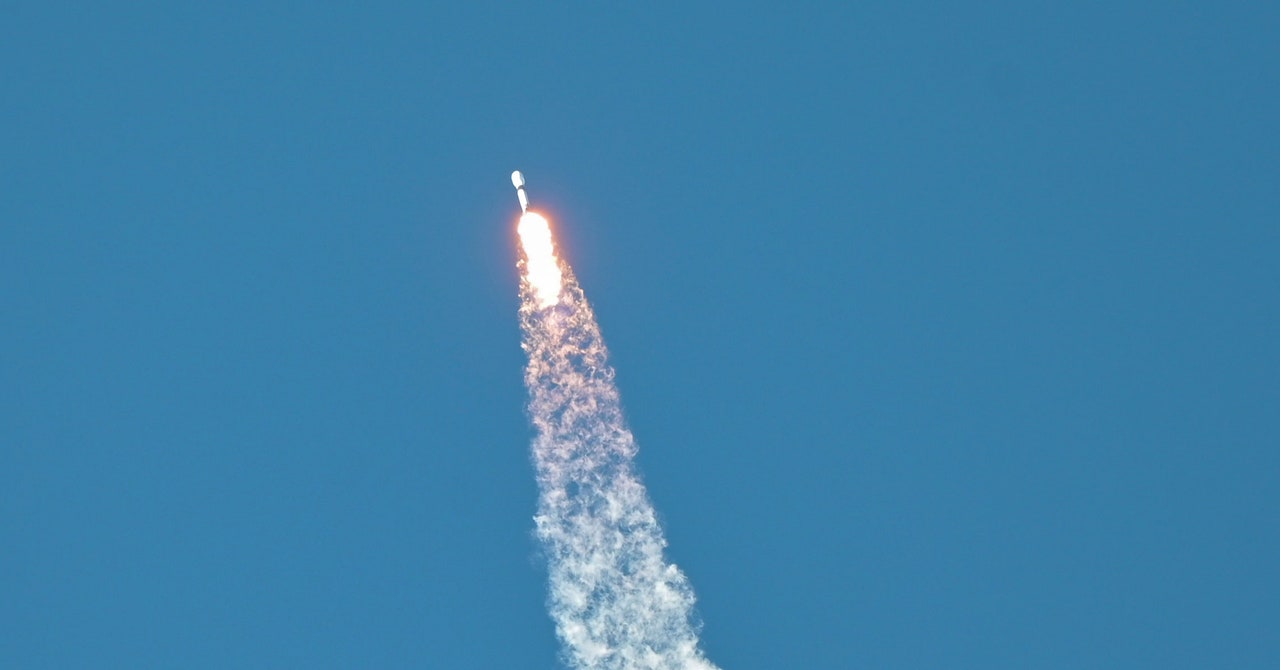
Four years after it was formed, the US Space Force has begun deploying its first satellite network. For the military, it marks a significant shift from relying on a handful of powerful, expensive satellites to a swarm of smaller, cheaper ones. From the Pentagon’s perspective, they’ll be a harder target for rivals to strike; a missile or a laser attack might take out an individual satellite, but would do little to weaken a whole swarm.
“Historically, the Department of Defense has been investing in billion-dollar Battlestar Galacticas that are big juicy targets,” says Derek Tournear, director of the Space Force’s Space Development Agency. “We wanted to go to an architecture that gave us resilience against threats and that we could upgrade rapidly every two years.”
The new satellites are for defensive purposes, focused primarily on missile tracking, data transfer, and communications between the satellites and their ground systems. The first 10 members of the fleet were lofted into low Earth orbit on April 2, and 13 more are planned to launch in late August from Vandenberg Space Force Base in California.
The agency plans to accumulate 28 satellites for the batch to be launched this year, which they call “Tranche 0.” These will mainly be used for testing and demonstrating these satellites’ technologies and training people to use them. Tranche 1, made up of more than 160 satellites, will follow in late 2024. Those will be operational, meaning they’ll be used for tracking ballistic and hypersonic missiles, especially with an eye out for those from China, Russia, and North Korea. Within a few years, the agency will have nearly 1,000 in orbit.
The Department of Defense currently relies on about 10 missile defense satellites in geosynchronous orbit, which means their orbits keep pace with the Earth’s rotation at an altitude of about 22,000 miles. Flying the new swarm in low Earth orbit, which is only 600 miles above the ground, will improve their detection sensitivity and the timeliness of their missile warnings.
Their diminutive size—about an eighth that of current satellites—is part of their advantage, as they’re cheaper and faster to develop and launch. “As threats to space expand, we can no longer rely on a strategy of putting most of our capabilities into these few large exquisite satellite systems. Now the DOD is taking the approach of building many systems on shorter timelines,” says Kari Bingen, director of the Aerospace Security Project at the nonprofit Center for Strategic and International Studies, whose funders include some US-based aerospace companies and military contractors.
While this is entirely a military operation, the Space Force is buying the satellite technology from private companies under contract. One swarm of the new satellites, provided by SpaceX and Florida-based L3Harris, will be charged with missile tracking using their wide field-of-view sensors. Another group, provided by Lockheed Martin and Colorado-based York Space Systems, will be relaying data between ground systems and the spacecraft. The agency will add other networks to the mix in about two years, including satellites from Northrop Grumman, according to Jennifer Elzea, an SDA spokesperson.

